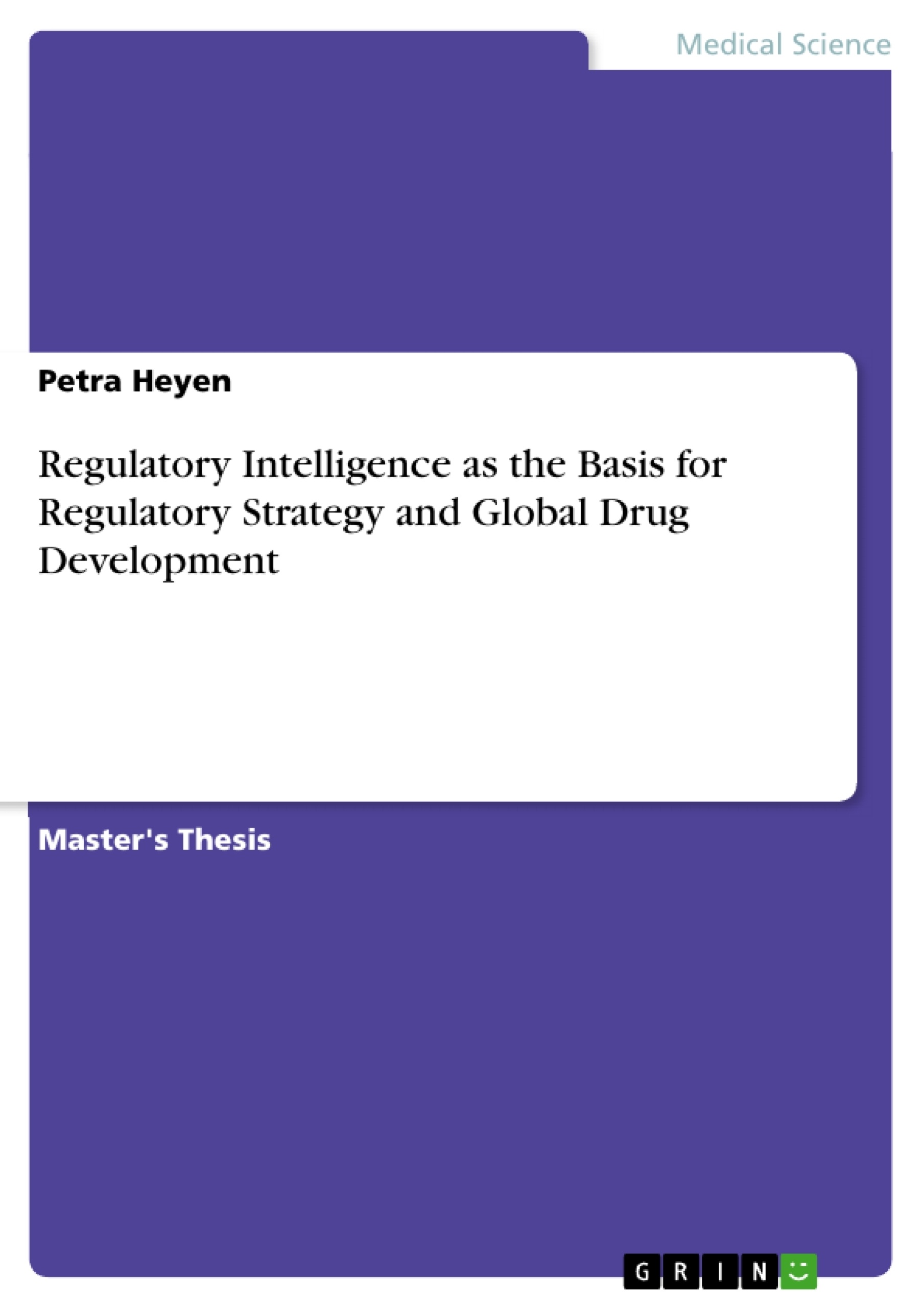The Regulatory Affairs (RA) department is a key discipline in the global network of drug development. During drug development, regulatory strategy is one crucial success factor for the approval of the development candidate. Also, regulatory strategy can optimise labelling in the key countries in order to maximise the market success. No submission and approval would be possible without the appropriate dossier composition and compilation. Without adherence to the respective guidance documents and scientific advice from Health Authorities to design the optimal clinical development plan, optimal labelling would not be feasible. These two examples show some characteristics of the regulatory strategy: it is highly interactive with other disciplines and it is heavily based on a thorough intelligence work which enables the RA Manager to know the “rules of the game” and to develop the optimal regulatory strategy for the current development candidate. The major cornerstone for developing a regulatory strategy is regulatory intelligence.
This document focuses on regulatory intelligence. The regulatory contributions to the global drug development from early research to submission are described. Strategies for generic drugs as well as detailed strategies for life-cycle management are excluded.
Major components of regulatory intelligence are:
• Competitor Information
• Information on Regulatory Environment
• Information on Legal Requirements
Competitor analysis is an essential aspect of the intelligence work. Sources of competitive information as well as relevant items of competitive information are described.
Sources of information about the regulatory environment and sources of information about the legal regulatory environment are described and their tremendous impact on setting up and modifying the regulatory strategy evaluated.
Special attention is paid to the components and sources of regulatory intelligence information (e.g. Internet links and documents related to intelligence information). Some examples show how regulatory intelligence information supports the regulatory strategic considerations.
The last section describes the regulatory strategy itself and examples of how regulatory intelligence acts as the basis for setting up the regulatory strategy. What is the basis of strategic considerations, what are the considerations, what are the major components of a regulatory strategy, how do the different disciplines involved in drug development work together?
Table of Contents
- LIST OF ABBREVIATIONS
- INTRODUCTION
- COMPONENTS OF REGULATORY INTELLIGENCE
- COMPETITOR INFORMATION
- Criteria for the definition of relevant competitors
- Essential information to be gathered about competitors.
- International Non-proprietary Name (INN)
- Trade name
- Countries and the associated Submission date / Approval date
- Clinical trials presented in the dossier
- Drug class
- Type of Procedure
- Competitor labelling
- Sources of Competitor Information
- Authority Homepages
- Company Homepages
- Scientific Publications
- Scientific Internet Search Engines
- General Internet Search Engines
- Labelling Databases
- REGULATORY ENVIRONMENT
- Agency Benchmarks
- FDA
- EMEA
- Germany
- France
- Conclusion
- Review 2001 (Europe)
- EU Enlargement
- Regulatory Precedents on Other Products
- Ongoing and Future Regulatory Changes
- Implementation of the Clinical Trial directive (Directive 2001/20/EC)
- Implementation of the CTD structure for Dossiers
- Trade Associations
- VFA
- EFPIA
- JPMA
- PhRMA
- IFPMA
- Regulatory Associations
- WHO
- Training courses and Meetings
- Agency Benchmarks
- LEGAL REQUIREMENTS
- General Requirements
- Supra-national Guidance - Example: ICH
- Europe
- Japan
- USA
- Therapeutic Area Guidance - Example: Microbial Diseases
- Special Populations - Example: Paediatric Patients
- Orphan Drug Designation
- General Requirements
- COMPETITOR INFORMATION
- REGULATORY STRATEGY
- DEFINITION OF “GLOBAL REGULATORY STRATEGY”
- REGULATORY AFFAIRS STRATEGIC CONTRIBUTIONS TO THE GLOBAL MULTIDISCIPLINARY DEVELOPMENT PLAN
- Competitor Analysis and Target Labelling
- Definition of Trade Name and INN
- Definition of Key Markets
- Definition of a Clinical Development Plan
- Identification and Validation of Relevant Guidelines
- Life Cycle Management Strategy
- REGULATORY STRATEGY AND IMPACT ON OTHER DISCIPLINES
- Submission Strategy
- Strategy for Meetings with Health Authorities
- Issue Management
- DISCUSSION
- REFERENCES
Objectives and Key Themes
The document examines the critical role of Regulatory Intelligence in shaping successful global drug development strategies. It explores how Regulatory Intelligence enables effective drug development planning and execution, ultimately leading to approval and market success.
- The importance of Regulatory Intelligence in global drug development
- The components and sources of Regulatory Intelligence information
- The impact of regulatory intelligence on strategic considerations
- The interdisciplinary nature of drug development and the role of Regulatory Affairs
- Strategies for gathering competitor information and analyzing the regulatory environment
Chapter Summaries
The document delves into the key aspects of Regulatory Intelligence, including its sources and applications. It analyzes competitor information, regulatory environments, and legal requirements, highlighting their impact on drug development strategies. The chapter on “Regulatory Strategy” explores the definition and implementation of a global regulatory strategy, highlighting its impact on various disciplines involved in drug development, such as clinical trials, submissions, and interactions with health authorities.
Keywords
The primary focus of this document is on Regulatory Intelligence and its application in global drug development. Key terms include Regulatory Affairs, regulatory strategy, competitor analysis, regulatory environment, legal requirements, clinical development plan, submission strategy, and interactions with health authorities.
- Citar trabajo
- Petra Heyen (Autor), 2004, Regulatory Intelligence as the Basis for Regulatory Strategy and Global Drug Development, Múnich, GRIN Verlag, https://www.grin.com/document/38005



